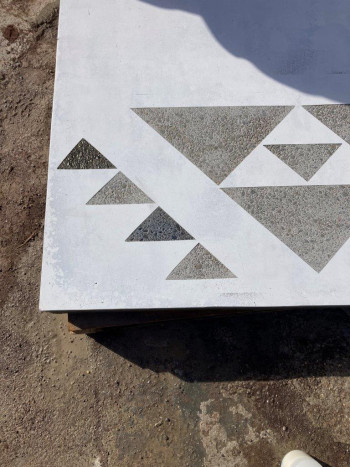
Testing of the Len Hetet’s designs.
12 June 2023
Mana whenua designer and artist Len Hetet will help to share the story of Te Awakairangi through several designs that will adorn the Pito-One to Melling section of Te Ara Tupua once completed later this year.
Pito-One to Melling is a 3.5km cycling route stretching from Pito-One to the Hutt River Trail near Bridge Street. It is one part of Te Ara Tupua, a project which will establish a safe and more reliable walking and cycling link between Wellington and Lower Hutt.
Te Ara Tupua was the name gifted to the wider project by Kura Moeahu of Taranaki Whānui for the project, Tupua Horo Nuku and Tupua Horo Rangi, the two seismic pathways which were generated by Ngāke and Whātaitai, the tupua (phenomenon) who created Te Whanganui a Tara (Wellington Harbour) which connects mana whenua narrative to space and place.
Len has been working with Waka Kotahi NZ Transport Agency, KiwiRail and engineers to integrate his design work into the current design aesthetics of the project.
The designs depict the story of Ngāke and the creation of Tupua Horo Nuku the eastern corridor from the Remutaka range, through to the harbour entrance into the Cook Strait. They will be incorporated into the two underpasses and walls below the Dowse Interchange, which the cycleway runs beside.
Signage boards will also be installed at each end of the route to help share the narrative behind the artwork.
Len says translating the cultural narrative into a design thematic has been a great opportunity to educate and give life to our history and stories.
“The idea of Te Awakairangi and the surrounding land masses forming as a result of the scarification of mother earth by Ngāke resonates with Māori and communities across the region and has flowed into the design work.
“This is a chance for people to experience this story as they travel to work or wherever they’re going, while also learning about the history that’s intertwined in the formation of this beautiful region,” Len says.
Senior Project Manager Gray Renwick adds his appreciation for Len and his work, saying “it’s a great way to utilise what could ordinarily be some dull looking infrastructure and instead showcase the cultural narrative of the area and build a sense of connection to our whenua.”